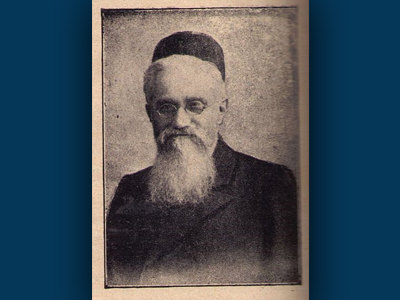First Tu B’Shvat Tree Planting Takes Place in The Land of Israel

February 5, 1890
The custom of planting trees in Israel on Tu B’Shevat begins when Ze’ev Yavetz (shown in the photo), an educator in Zichron Ya’akov, takes his students to plant trees. In 1908, the custom was adopted by the teacher’s unions and the Keren Kayemet (JNF).
Yavetz was a writer and historian who was born in Kolno, Poland in 1847 to a wealthy family. He gained a reputation for his scholarship with an article on Jewish history from 1786-1886. He made aliyah to the Land of Israel in 1888 and settled in Zichron Yaakov where he worked as a teacher. He wrote many articles which were published throughout the Land of Israel and also developed a series of textbooks.
Yavetz served on the Va’ad HaLashon, the committee which was responsible for developing Modern Hebrew. As a member of the committee, he is credited with introducing two words: tarbut, meaning “culture” and kvish, meaning “road”. He also advocated that the Hebrew names for the days of the weeks should be according to the items that were created on those days in the Torah and used by Queen Esther to name her maidens, as mentioned in the Targum commentary.
Yavetz told Haaretz in 1891, “For the love of the saplings…the school must make a festival of the day that was set aside from ancient times in Israel as the New Year of the Trees. To gracefully and beautifully arrange the trees, saplings, lilies and flowers just like they do in Europe on the first of May.”
Yavetz would leave the Land of Israel in 1894, eventually settling in London where he completed his fourteen volume history of the Jewish people from their time in ancient Israel through the Diaspora.